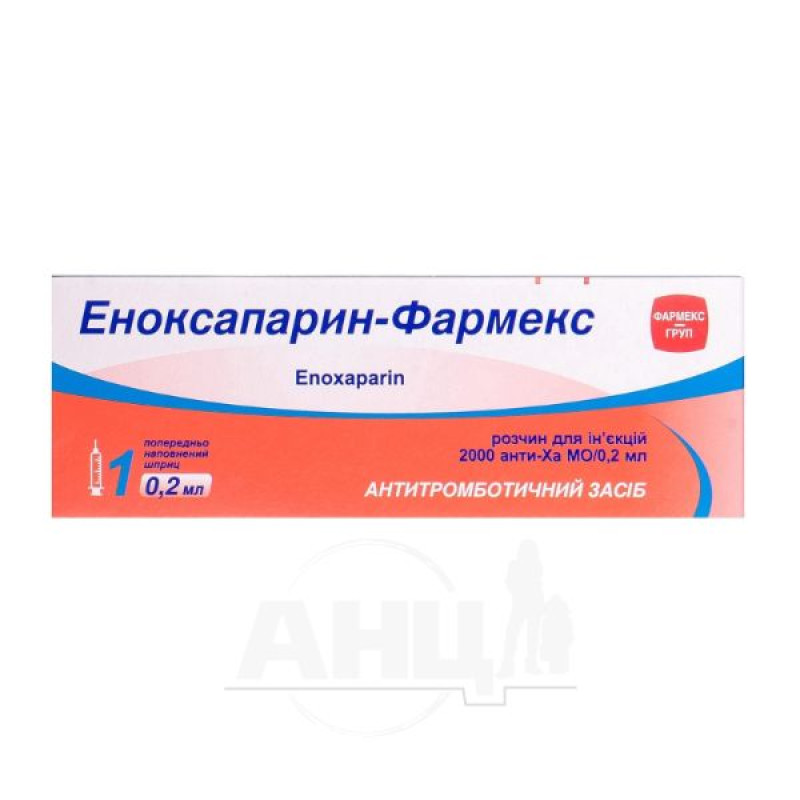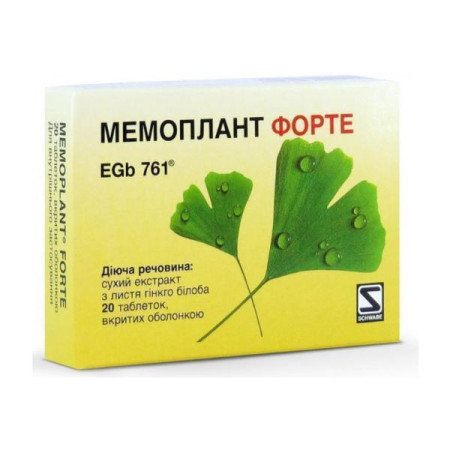Enoxaparin-Pharmex solution for injection 2000 anti-Xa IU syringe 0.2 ml No. 1

Enoxaparin-Pharmex injection solution is used for the following indications:
prevention of venous thromboembolism in surgical interventions accompanied by moderate and high thrombogenic risk; prevention of deep vein thrombosis in patients who are on bed rest due to acute therapeutic diseases: heart failure III or IV class according to the NYHA classification, acute respiratory failure, acute infectious or rheumatic disease, in the presence of at least one other risk factor for venous thromboembolism; prevention of thrombus formation in the extracorporeal circulation circuit during hemodialysis (the procedure lasts on average up to 4 hours); treatment of diagnosed deep vein thrombosis, which is accompanied or not accompanied by pulmonary artery thromboembolism and does not have severe clinical symptoms, with the exception of pulmonary artery thromboembolism, which requires treatment with a thrombolytic agent or surgical intervention; treatment of unstable angina and acute myocardial infarction without Q wave in combination with acetylsalicylic acid; treatment of acute myocardial infarction with ST segment elevation in combination with a thrombolytic agent in patients who may undergo further coronary angioplasty, as well as in patients who are not candidates for this procedure.Composition
Active ingredient: enoxaparin sodium;
1 ml of solution contains 10,000 anti-Xa IU, which is equivalent to 100 mg of enoxaparin sodium;
2000 anti-Xa IU / 0.2 ml, equivalent to enoxaparin sodium 20 mg;
4000 anti-Xa IU / 0.4 ml, equivalent to enoxaparin sodium 40 mg;
6000 anti-Xa IU / 0.6 ml, equivalent to enoxaparin sodium 60 mg;
8000 anti-Xa IU / 0.8 ml, equivalent to enoxaparin sodium 80 mg;
Excipients: water for injections.
Contraindication
Hypersensitivity to enoxaparin, heparin or its derivatives, including other LMWHs. History of severe heparin-induced thrombocytopenia (HIT) type II, which was caused by unfractionated heparin or low molecular weight heparin. Bleeding or a tendency to bleeding associated with impaired hemostasis (a possible exception to this contraindication may be DIC, if it is not associated with heparin therapy. Organic lesions that can cause bleeding. Active clinically significant bleeding.Method of application
1 mg (0.01 ml) of enoxaparin sodium corresponds to approximately 100 units of anti-Xa activity IU. Flenox® should be administered subcutaneously for prophylactic and therapeutic use, except in the following cases:
use of the drug for anticoagulation in hemodialysis practice; treatment of patients with ST-segment elevation myocardial infarction who require intravenous bolus administration.Application features
Pregnant women
Enoxaparin sodium should be prescribed to pregnant women only if the doctor determines a clear need for such treatment.
Children
Contraindicated.
Drivers
The effect of enoxaparin sodium on the ability to drive vehicles and operate other mechanisms is absent or insignificant.
Overdose
Accidental overdose with subcutaneous administration of significant doses of LMWH may lead to hemorrhagic complications.
In case of bleeding, some patients can be treated with protamine sulfate, but it should be noted that:
The effectiveness of protamine sulfate is significantly lower than that observed in an overdose of unfractionated heparin; the benefit/risk ratio should be carefully weighed before using protamine sulfate due to the possibility of adverse events (including anaphylactic shock).Neutralization of enoxaparin should be carried out by slow intravenous administration of protamine (sulfate or hydrochloride).
The required dose of protamine depends on:
the administered dose of heparin (100 antiheparin units of protamine neutralize the activity of 100 anti-Xa IU of LMWH), if no more than 8 hours have passed since the administration of enoxaparin sodium; the time elapsed after the heparin injection: if enoxaparin sodium was administered more than 8 hours ago or a second dose of protamine is required, an infusion of 50 antiheparin units of protamine per 100 anti-Xa IU of enoxaparin can be performed; if enoxaparin was administered more than 12 hours ago, then there is no need to administer protamine.These recommendations are for patients with normal renal function who are receiving repeated doses of the drug.
However, it is impossible to completely neutralize the anti-Xa activity of enoxaparin.
In addition, neutralization may be temporary due to the pharmacokinetics of LMWH absorption, which may necessitate dividing the total calculated dose of protamine into several injections (2-4) administered over 24 hours.
If LMWH enters the stomach, even in large quantities, serious complications are unlikely (no such cases have been recorded) due to the insignificant absorption of the drug in the stomach and intestines.
Side effects
In clinical trials, the most frequently reported adverse reactions were haemorrhagic events, thrombocytopenia and thrombocytosis.
Interaction
Subcutaneous injection - do not mix with other medications.
Storage conditions
Store in the original packaging at a temperature not exceeding 25 °C. Do not freeze.
Keep out of reach of children.
Shelf life - 2 years.
There are no reviews for this product.
There are no reviews for this product, be the first to leave your review.
No questions about this product, be the first and ask your question.

